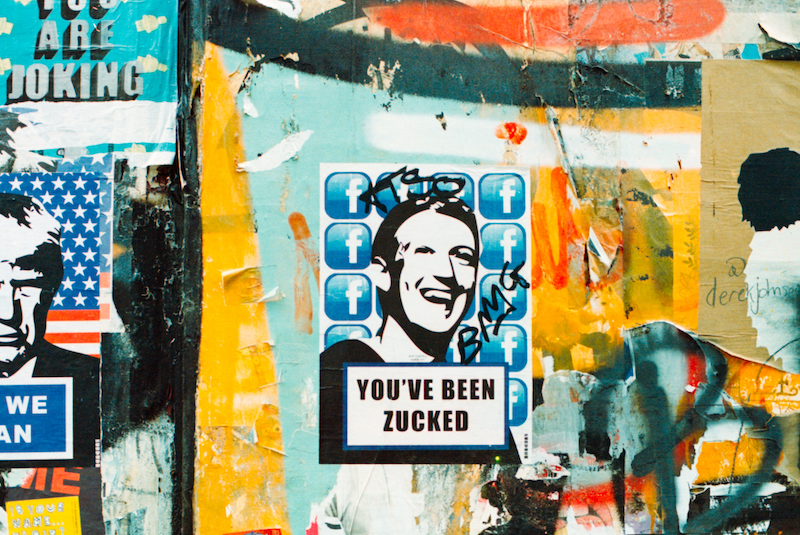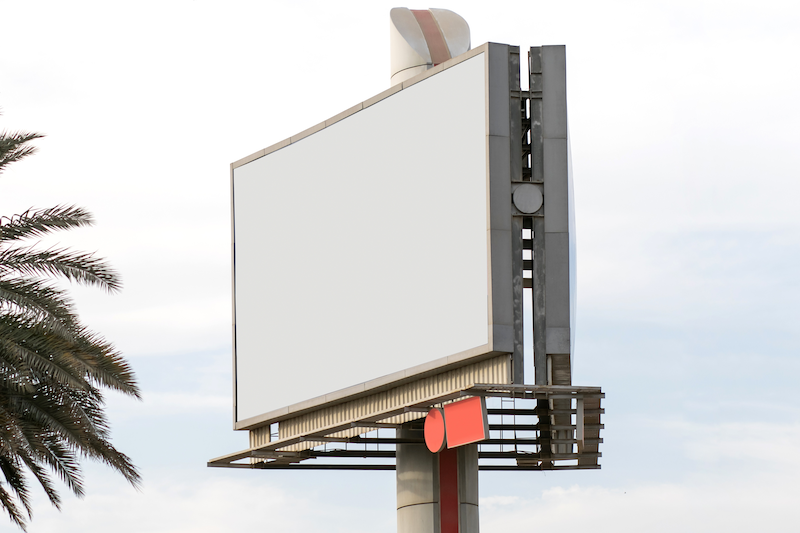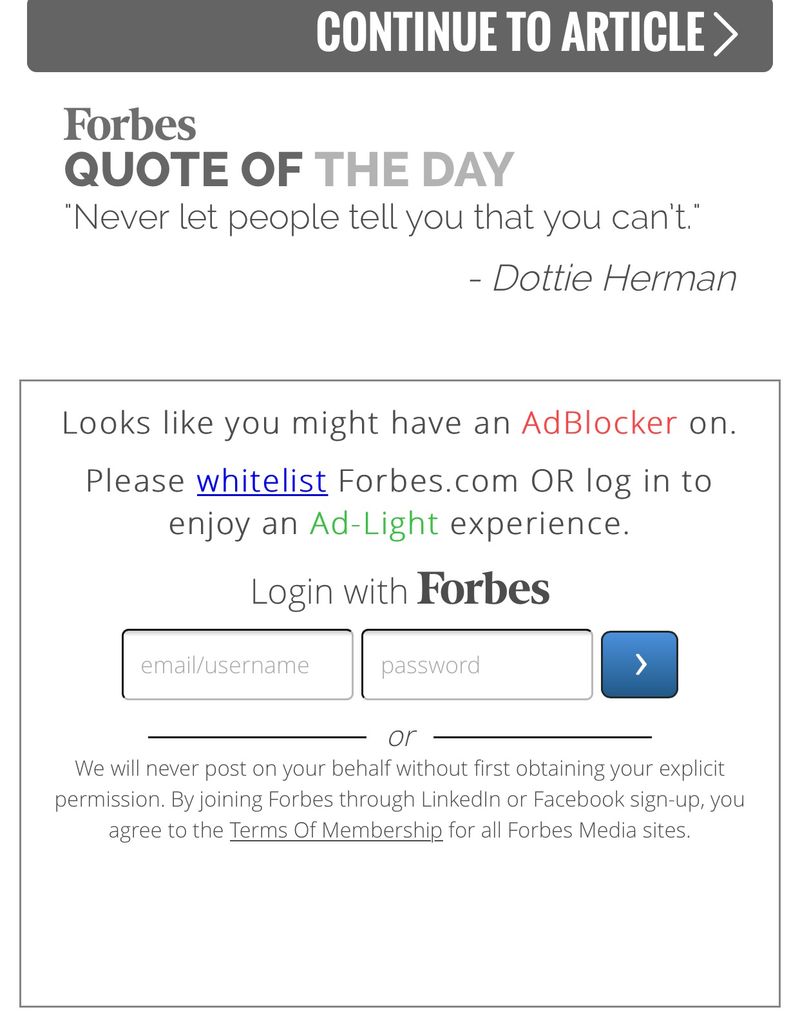This is a post that I drafted when Facebook released their last results, and never got around to publishing. Why publish it now? For a start, none of this is breaking news, so it remains as relevant as it ever was. More importantly, with the ongoing bonfire of Twitter, the questions of whether ad-funded social networks are a good thing or not is more relevant than ever.
My position remains that none of this tracking nonsense is worth while. I have never been served a relevant ad through surveillance-driven adtech. Meanwhile, brand advertising works just fine, simply by virtue of the brand being present in the right context: bike gear on a cycling blog, that sort of very limited targeting that only requires a single bit of information about the audience.
Meta Loses Top-10 Ranking by Market Value Amid Worst Month Ever
Social media company falls behind Tencent in value ranking
Facebook parent has lost $513 billion in market cap from peak
Stock has fallen 46% from last year’s record.
What do the terrible results announced by Facebook — I refuse to give in to their desire that we call them Meta — actually mean?
Zuck blamed Apple's ad tracking prevention features for wiping $10B off their bottom line, and there has been a concerted push since to present this as somehow a bad thing, especially for small businesses. I agree with Nick Heer that this framing is pretty gross on Facebook's part, but what I wanted to do today is to discuss alternatives that are open to marketers today.
I'm not in marketing these days, and I never worked directly in the demand-generation side that would get actively involved with this sort of thing — but I have worked closely with those teams and been in the planning meetings, so I have at least an idea of how that business works.
Everything starts with a campaign: you have a particular message you want to get out, you want it to reach a particular audience, and you want some idea of how effective it is. Given those goals, there are different ways to go about running your campaign — different largely in their ethics, rather than in their actual results. Let's take a look.
 Alice and Bob work for ACME Widgets Corp. Both of them are launching marketing campaigns for the coming quarter — but they take different approaches, even though they have the same metrics set by their boss, Eve the VP of Marketing.
Alice and Bob work for ACME Widgets Corp. Both of them are launching marketing campaigns for the coming quarter — but they take different approaches, even though they have the same metrics set by their boss, Eve the VP of Marketing.
Alice goes all-in on the surveillance model: her emails have tracking pixels, the links they point to are all gated behind a form that also signs you up for a newsletter, she places ads that follow users around the web once they have come within her surveillance web. She even messes with the favicon and the hosted fonts on the website in order to be able to track users that way. At the end, thanks to all of this effort, Alice can show Eve attribution metrics with a certain click-though rate for her outreach and a certain acquisition cost per customer, set against their likely lifetime value to ACME.
 Bob takes a different tack: his emails are plain text, without even any images — since plenty of people now reflexively block all images in email, or load them through proxies. The links in the email are customised so that Bob can tell which email was the one that triggered the action, but then they go directly to the linked resource. He also buys ads, but instead of direct calls to action, Bob focuses on brand advertising in the sorts of publications that the prospective customers are likely to read. At the end, Bob can also show Eve attribution metrics, click-through rates and customer acquisition costs — but he has got there with without irritating prospective customers, or falling foul of either technical countermeasures or policies such as GDPR or CCPA.
Bob takes a different tack: his emails are plain text, without even any images — since plenty of people now reflexively block all images in email, or load them through proxies. The links in the email are customised so that Bob can tell which email was the one that triggered the action, but then they go directly to the linked resource. He also buys ads, but instead of direct calls to action, Bob focuses on brand advertising in the sorts of publications that the prospective customers are likely to read. At the end, Bob can also show Eve attribution metrics, click-through rates and customer acquisition costs — but he has got there with without irritating prospective customers, or falling foul of either technical countermeasures or policies such as GDPR or CCPA.
Comparing Alice and Bob’s Results
Effectively, Alice and Bob have access to the same metrics; it's just that one of them is going about the process of gathering them honestly. The only data point Bob is missing is the open rate on those emails — but first of all, how useful is that metric in reality? If the indicator that an email was opened is that a tracking pixel was loaded, Alice doesn't know whether the recipient actually read the whole thing, or paged past her email quickly on their way to something they actually wanted. And even assuming that it's an accurate representation of how many people read the text but don't click on any of the links — what can Alice do with that information that Bob would not also do with the information that he sent out X number of emails and Y% of recipients clicked on the call-to-action link? And no, for goodness sake, the answer is not even more layers of attribution woo that claims to be able to identify whether someone came to the ACME website because they remembered the email, or the billboard ad, or because someone mentioned it to them at work — let alone trying to embed the "read progression" code that far too many websites now include.
Secondly, all of these intrusive metrics now have a firm expiry date stamped on them. On top of the ad tracking prevention, Apple now offers a Private Relay capability in iCloud that hides originating IP addresses. Browsers already no longer report a whole lot of information that they used to, precisely because it was used for creepy tracking stuff. By building her campaigns this way, Alice might achieve her goals today, but soon she will not be able to run campaigns like this, and will have to learn to do things Bob's way anyway.
At the core of Bob's method is turning tracking inside out. Instead of trying to stalk users around the Web, engaging in a constant arms race and violating their clearly expressed preference, Bob simply figures out where his most valuable prospects gather and advertises there. First-party data is enough for his purposes, and while individual ads might be more expensive in CPM, he avoids engaging with an ecosystem that is ridden with fraud. He also does not need to worry that the ACME ad might show up beside some tin-foil-hatter YouTube channel and get bad press that way — and the time he doesn't spend micro-managing ad placement can be spent more productively on creating better copy, or an entire other campaign.
Context matters in other ways, too: when a prospective customer is reading about the latest political crisis, famine, or natural disaster, they are not in a widget-buying mood, so showing them a widget ad is counter-productive anyway. Instead, Bob puts his widget ads in widget blogs, places them with streamers who test widgets, and gets hosts of widget-focused podcasts to read out his ads. All of these channels have very limited tracking; podcasts offer none at all, unless Bob creates a special landing page or discount code for listeners of each podcast. And yet, those are some of the most expensive ad slots around, because the context makes them very strong indicators of desire to buy.
Eve looks at the campaign performance numbers presented by a haggard Alice and a relaxed Bob, remembers the news stories about Apple and Google clamping down further on ad tracking, and suggests gently to Alice that maybe she should sit with Bob and figure out how to get the job done without the crutch of surveillance ad tech.
🖼️ Photos by Charles Deluvio and Headway on Unsplash









